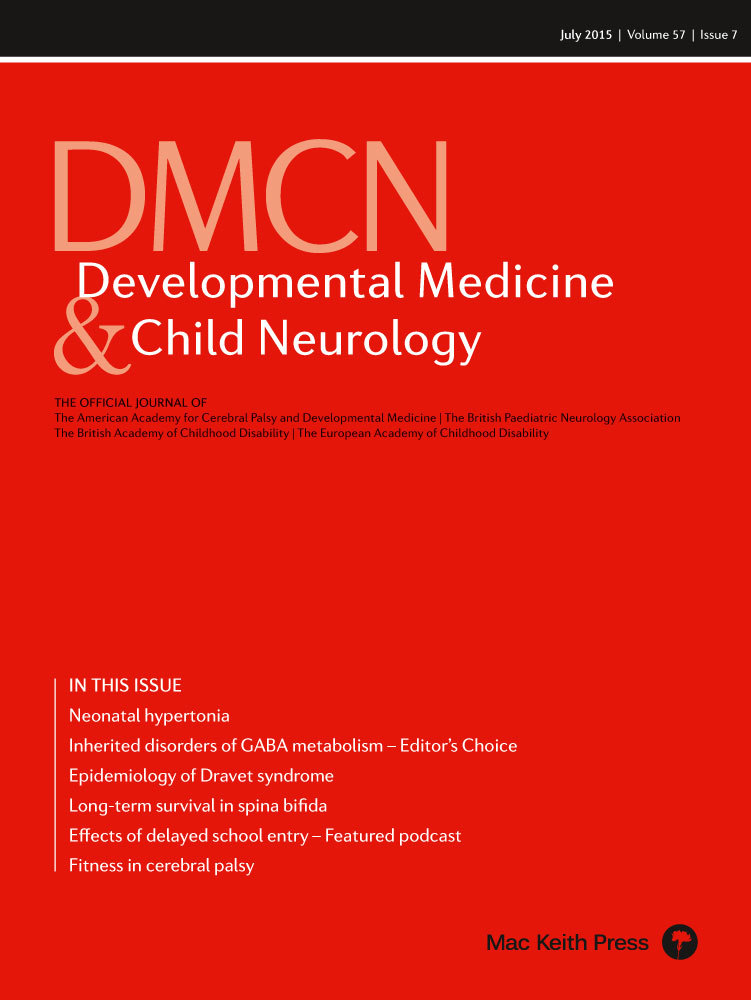Trunk control for reaching: growing into or out of dysfunction?
Abstract
This commentary is on the original article by van Balen et al. on pages 668–676 of this issue.
Deficits in postural control are a hallmark of cerebral palsy (CP), yet little is known about the trajectory of early postural development in children with CP due to the difficulty of diagnosis before 1.5 to 2 years of age. This hampers efforts to improve rehabilitation and services for children during the early years when their nervous systems are most receptive to activity-based interventions. Knowledge of the time course, processes, and interactions of postural development with functional skills is essential for understanding current treatment responses and for developing strategies for better outcomes for these children.
The article by van Balen et al.1 is of great interest because it offers a rare glimpse into longitudinal postural reactions in a group of young infants at high risk for neurological deficits. They report that postural reactions during reach did not differ between infants at high risk and typically developing infants at 4 and 6 months of age, while at 18 months the infants at high risk showed significant deficits in timing and coordination of postural muscles during reach. The authors conclude that the infants at high risk ‘grew into postural deficit’. These findings suggest that neural connections to trunk muscles, similar to corticospinal connections for upper extremity function,2 may be intact at birth but susceptible to activity-dependent remodeling during the first years of life.
There are several issues that need consideration before fully embracing these conclusions. (1) Inclusion criteria for the group at risk required ‘definitely abnormal general movements’ at 10 weeks of age. This raises a question about why, if general movements were abnormal, their movements for postural reactions during reach were ‘virtually similar’ to typically developing infants at 4 and 6 months of age. Were postural responses the same or does the method of evaluation lack the sensitivity to differentiate between high risk and typically developing at early ages when infants have noisy data due to variability of performance? Ultimately we must ask, did the infants at high risk ‘grow into their dysfunction’ or did the typically developing infants ‘grow out of their dysfunction’? The results reported for direction specificity suggest the latter while results for anticipatory reactions and latency of onset suggest the former. (2) This study used only three observational episodes: 4, 6, and 18 months. Increased frequency of observation is necessary to examine the true trajectory of postural development and isolate other contributing factors.3 (3) There were no measures indicating age of onset for independent sitting. While children in the two groups were the same chronological age, they were most likely at different developmental stages of postural control especially by the time they were 18 months of age. (4) The methods used for electromyography (EMG) could have contributed to sparse information. Collecting bilateral EMG from trunk muscles would allow greater opportunity to record direction specificity, and recruitment order. The adult-like 100ms window for anticipatory responses could have biased the results against the group at high risk who showed increasing latency of responses with age.
The authors entice us with the ambiguity of questions faced by clinicians and researchers. The need to pose challenging situations to stimulate postural activity is countered by the need to provide adequate postural support to allow infants to learn fine motor and cognitive skills. What is the optimal position for training upper extremity and postural skills? Can posture and reach be trained simultaneously or are the positioning requirements in opposition? Systematic use of external support at different segments of the trunk has been used to explore postural development4 and interactions between posture and reach5 in typically developing infants. These methods could help determine the optimal support requirements for intervention if applied to infants at risk.
One important aspect of this study was the identification of infants at risk for neurological deficits at 10 weeks of age using the General Movements Assessment. While only five of the infants ended up with a diagnosis of CP, 84% were diagnosed with some level of neurological dysfunction at 18 months. Use of this assessment would allow researchers and clinicians to identify infants at risk for postural deficits in a timely manner for both research and treatment.6




